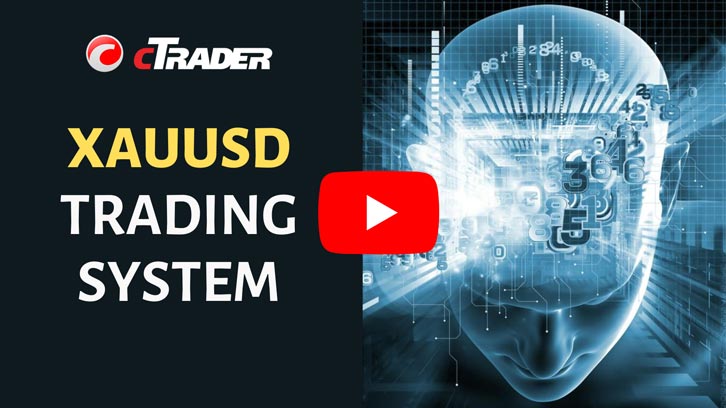The latest and most updated bot from the TLM series is their fusion bot known as Fusion TLM. This bot draws structures with the help of Swings and considers their numbers for transactions. It obtains the latest BOS and ChoCh of the market and uses two RSI and Stochastic indicators to enter the trade in the direction of the trend.

Swing Based Strategy
The main basis of the strategies of TLM series bots is based on the indicator made by the programmers of the Modern Andishan Jay company called Swing, which obtains the Highs and Lows (in the range) of the price chart and helps us to understand ChoCh or BOS.
When the trades are opened, their Take Profit is placed on their previous swings, but it does not have Stop Loss, and the cBot closes the trade if it sees a violation view. For example, if the BOS of XAUUSD is bullish, if we are in the last structure (between the last SwingHigh and SwingLow) and if Stochastic or RSI gives us a signal, we will enter the trade, if the last BOS is bearish, we will open a sell trade and if it is bullish, we will open a buy trade. If these BOSs against the previous trend (ChoCh) occur, they will be Close to the trade.
How to Test the Strategy
You can easily test this system by running a backtest over any period, you can use short or long periods, as it does not require ongoing parameter optimisation (calibration) the system should provide more winning trades than losing trades.
You can download a 14-day trial above.
How to Optimise
You will need to learn how to optimize the cBots settings regularly.
cBot Settings Explained
Trading is done with three indicators: RSI, Stochastic and IchimokuKinkoHyo. Therefore, in the first group of settings, that is, the Strategies group, you can turn them off or on.
- RSI: If it is "Yes", it creates a trade with this strategy.
- Stochastic: If it is "Yes", it creates a trade with this strategy.
IchimokuKinkoHyo: If it is "Yes", it creates a deal with this strategy.
Each of the above entry strategies has specific time frames and settings for the indicator, and swings are created separately for each of them.
In the RSI Swing Indicator group, the settings are as follows:
- RSI Swing TimeFrame: RSI indicator swing timeframe.
- RSI Swing Strength: Strength value (the ability to identify swings) of the RSI indicator.
In the Stochastic Swing Indicator group, the settings are as follows:
- Stochastic Swing TimeFrame: Stochastic indicator swing timeframe.
- Stochastic Swing Strength: Strength value (ability to identify swings) of the Stochastic indicator.
In the IchimokuKinkoHyo Swing Indicator group, the settings are as follows:
- IchimokuKinkoHyo Swing TimeFrame: IchimokuKinkoHyo swing time frame indicator.
- IchimokuKinkoHyo Swing Strength: Strength value (ability to identify swings) of the IchimokuKinkoHyo indicator.
Now we go to the settings of each indicator. In the RSI Oscillator group, the settings are as follows:
- RSI Periods: RSI indicator period.
- RSI TimeFrame: RSI indicator time frame.
In the Stochastic Oscillator group, the settings are as follows:
- K Periods: The value of K Periods is determined.
- K Slowing: The value of K Slowing is determined.
- D Periods: The value of D Periods is determined.
- MA Type: The type of moving average used in the desired indicator.
- Stochastic TimeFrame: Stochastic indicator time frame.
Now it's time to set the IchimokuKinkoHyo indicator:
- TenkanSen Period: Tenkan period value.
- KijunSen Period: Kijun period value.
- SenkouSpanB Period: SenkouSpanB period value.
- IchimokuKinkoHyo TimeFrame: The time frame of the indicator is set.
In version 1.7.1, an exponential moving average is used to manage wrong trades of the robot, for which you can make the following settings:
- EMA Period: EMA period which defaults to 200.
- EMA TimeFrame: The time frame in which the EMA is drawn.
Now we go to the settings related to capital management and transactions in the Position Options section:
- Risk: How much of your capital does the robot risk per trade? (By default, it is 20%.) Yes, 20% is a high risk, but it rarely happens that your transactions will be exited with this risk.
- Lot AutoCalculator: A great capital management option that is great for opening trades with the right volume. The formula for automatically calculating the volume is as follows:
- (Equity/(10000*Lot Confidence Factor))
Lot Confidence Factor: It is a confidence factor that defaults to 2. If you want it to be less risky for you, set it to three.
Lots: If "Lot AutoCalculator" is set to "No", the volume of the transaction will be read from you by this section.
Close Position With Change Trend: In very, very special circumstances, this option should be clear that the robot does this automatically, so it is better not to set it to "Yes" manually.
What Results Can It Achieve?
It's essential to recognise that no automated trading system can consistently deliver positive results without active oversight. All trading bots, regardless of the strategy, require an experienced trader to monitor performance, adjust parameters, and make informed decisions based on changing market conditions. They are tools to support trading, not replacements for trader expertise.
How To Install & Remove
First, make sure you have the cTrader trading platform installed and then unzip the file and double-click on it to automatically install it onto the platform.
Any Questions?
If you have any questions, please first search our product help site for the answer, if you cannot find it, post a new question.
Latest Updates
1- add a new Trigger strategy with an Ichimoku indicator
2- show all parameters of cBot to the user
3- The impact of transactions at different times on each other
4 - Optimizing capital management using risk percentage



